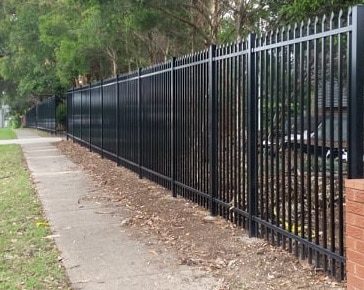Introduction
In a world increasingly knowledgeable about environmental issues, the choice of materials in building and construction projects has gotten extraordinary value. This is specifically real in the world of fencing, where consumers are frequently faced with various choices that can substantially impact both looks and the environment. In this article, we check out The Environmental Impact of Selecting Sustainable Materials with Fence Experts, diving deep into how choosing sustainable materials can add to a much healthier planet while providing practical advantages for property owners and businesses alike.
The Environmental Impact of Choosing Sustainable Products with Fence Experts
When it concerns fencing, the products you choose can either add to environmental destruction or promote sustainability. Sustainable materials are those that are eco-friendly, sustainable, and have a minimal carbon footprint. The choices made by house owners and professionals alike can substantially affect ecosystems, wildlife environments, and even local communities.
Why Choose Sustainable Fencing Materials?
Opting for sustainable products in your fencing project can yield several benefits:
- Reduced Carbon Footprint: Sustainable products usually have a lower carbon footprint compared to conventional options. Longevity: Lots of sustainable products use sturdiness that can last longer than standard options. Aesthetics: Modern sustainable fencing solutions frequently present aesthetically pleasing designs. Cost-effectiveness: While initial costs may be higher, sustainable fences often save cash in the long run due to decreased maintenance needs.
Key Sustainable Fencing Options
Several environmentally friendly products stick out when it comes to fencing:
Timber Paling Colorbond Steel Recycled Plastics Bamboo Vinyl Fencing (made from recycled products)Each of these options has special characteristics that make them appropriate for different applications.
Understanding Timber Paling as a Sustainable Option
What is Lumber Paling?
Timber paling is an olden approach of structure fences using wooden slabs or panels. However, not all lumber is created equal; sustainably sourced timber makes a considerable difference.
Benefits of Lumber Paling
- Renewable Resource: When sourced from licensed sustainable forests, timber serves as a renewable resource. Carbon Sequestration: Trees soak up CO2 during their development; therefore, utilizing lumber contributes positively to lowering climatic carbon levels. Aesthetic Appeal: Timber paling offers a natural look that mixes wonderfully with outdoor landscapes.
FAQs About Timber Paling
Is timber paling expensive?- While preliminary costs might be higher than some synthetic options, its durability typically validates the investment over time.
- Regular sealing and treatment versus insects will ensure its durability.
- Absolutely! Reclaimed wood adds character and additional decreases ecological impact.
The Function of Fencing Contractors in Sustainable Choices
Fencing professionals play a vital role in implementing sustainable practices in domestic and business jobs. By aligning themselves with https://parapetfencing.com.au/ environmentally friendly suppliers and educating clients on sustainable alternatives like timber paling or Colorbond steel, they help pave the way towards greener building and construction practices.
How Professionals Can Promote Sustainability
- Educating clients about environment-friendly alternatives Sourcing in your area produced materials Implementing waste-reduction strategies during installation
Colorbond Steel: An Environmentally Friendly Fencing Solution
What is Colorbond Steel?
Colorbond steel is a popular fencing product known for its strength and versatility. Available in numerous colors and surfaces, it's not just long lasting however likewise created with sustainability in mind.

Benefits of Colorbond Steel Fencing
- Low Upkeep: Unlike wood fences needing routine treatments, Colorbond steel requires very little upkeep. Recyclability: At the end of its life cycle, Colorbond can be fully recycled without losing quality. Weather Resistance: It endures severe Australian weather better than lots of other materials.
FAQs About Colorbond Fencing
Is Colorbond suitable for seaside areas?- Yes! Its corrosion-resistant properties make it ideal for seaside environments.
- High-quality Colorbond items come with guarantees against fading.
- Certainly! There are multiple color choices readily available to suit your taste and landscaping needs.
The Growing Trend of Recycled Plastic Fencing
Understanding Recycled Plastic Fencing
As customers become more ecologically conscious, recycled plastic fencing has emerged as an ingenious solution within the industry.


Key Benefits of Recycled Plastic Fencing
- Durability: Resistant to rot, bugs, and UV rays. Minimal Ecological Effect: Made from post-consumer plastic waste reduces land fill contributions. Maintenance-Free: Requires no painting or staining.
FAQs About Recycled Plastic Fencing
How does recycled plastic compare cost-wise to standard wood?- It may be somewhat more pricey upfront however conserves costs on upkeep long-lasting.
- Yes! It's non-toxic and safe for animals to engage with.
- Generally not recommended; nevertheless, some specialized finishes might adhere well if needed.
Conclusion: Making Educated Choices
Choosing sustainable fencing products is more than just a visual decision; it's an investment in our world's future. Whether through timber paling or modern innovations like Colorbond steel or recycled plastics, working with knowledgeable fencing contractors makes sure that property owners can make informed decisions that align with their values while still accomplishing functional and beautiful results at their properties.
By comprehending the environmental impact related to various fencing choices-- and actively looking for sustainable services-- we contribute positively not simply to our immediate environment but likewise pave the way for future generations to enjoy nature's appeal without compromise.
FAQs:
What kinds of fences are thought about sustainable?- Options include timber paling sourced from sustainable forests, Colorbond steel understood for its recyclability, and fences made from recycled plastics or bamboo.
- Ask about their sourcing practices and whether they partner with suppliers who offer certified sustainable products.
- Look for certifications such as FSC (Forest Stewardship Council) which suggest accountable forest management.
- Initial costs may vary based upon material option; however, long-lasting cost savings on upkeep often balance out initial investments.
- Yes! With proper preparation and tools, DIY lovers can successfully set up numerous kinds of sustainable fencing.
- Timber needs routine sealing; Colorbond needs very little care; recycled plastic needs no special treatment at all.
This extensive expedition targets at shedding light on how making informed choices about fencing materials leads us towards sustainability while enhancing our home visually too!